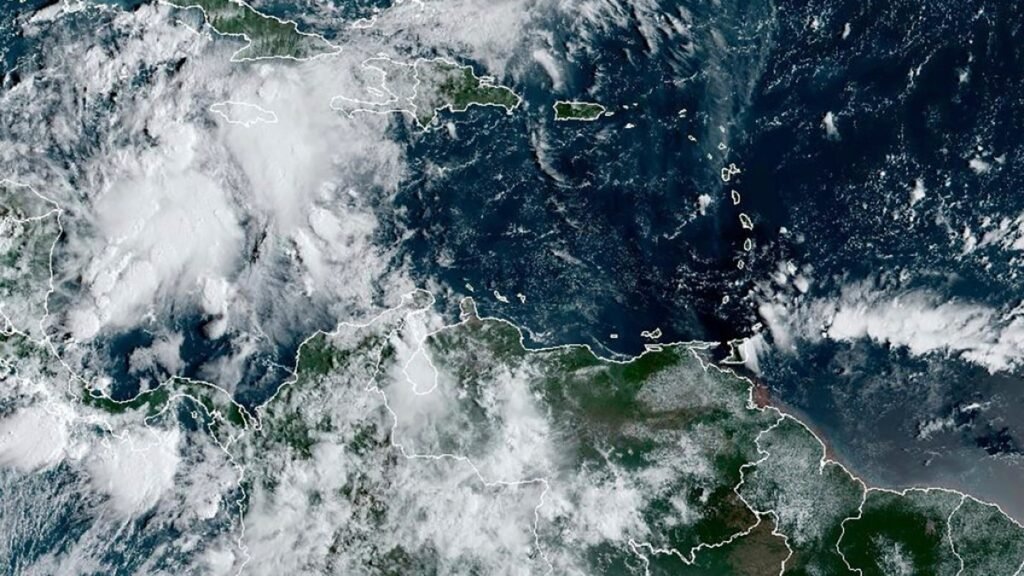A system of storms in the Caribbean is forecast to develop into Hurricane Helene by the middle of the week, potentially becoming a major hurricane as it moves north towards the southern coast of the United States. The National Hurricane Center has predicted that Helene could reach the northeastern Gulf Coast by Thursday, with maximum sustained winds of 185km/h, making it a Category 3 hurricane on the Saffir-Simpson Hurricane Wind Scale. The warm waters of the Gulf of Mexico are expected to fuel the storm’s intensity as it approaches land.
The storm system, currently located south-southwest of Grand Cayman, is moving north at a speed of 11km/h with maximum sustained winds of 55km/h. Cuba and Mexico are already under a hurricane watch as the storm approaches, with heavy rainfall expected in these regions as well as the southeastern US. The forecast also includes predictions of up to 1.2 meters of storm surge in parts of Cuba and Mexico, raising concerns about potential flooding in these areas.
Helene would be the eighth named storm of the Atlantic hurricane season this year, with four of the storms making landfall in the US. Hurricane Francine, which struck the Gulf Coast of Louisiana as a Category 2 storm, is among the recent storms to have impacted the US. The current hurricane season has seen an above-average number of storms, with the US National Oceanic and Atmospheric Administration predicting 17 to 25 named storms and four to seven major hurricanes. This has raised concerns about an insurance crisis for homeowners in coastal areas.
Despite the predictions for an active hurricane season, the season has seen a slow start, puzzling forecasters who are trying to understand what factors may have impeded the formation of major storms. With record-warm ocean temperatures contributing to the likelihood of storms, the lack of significant activity in the Atlantic hurricane corridor has left experts searching for explanations. The current situation has underscored the unpredictable nature of hurricanes and the challenges they pose for forecasting and disaster preparedness.
As Hurricane Helene continues to develop and move towards the Gulf Coast of the United States, residents in the affected regions are urged to stay informed about the storm’s progression and follow safety guidelines. With the potential for significant winds, heavy rainfall, and storm surge, it is important for individuals to take precautions and have a plan in place in case of evacuation. The impact of hurricanes on coastal communities highlights the importance of resilience and preparedness in the face of natural disasters, emphasizing the need for proactive measures to mitigate risks and protect lives and property.

